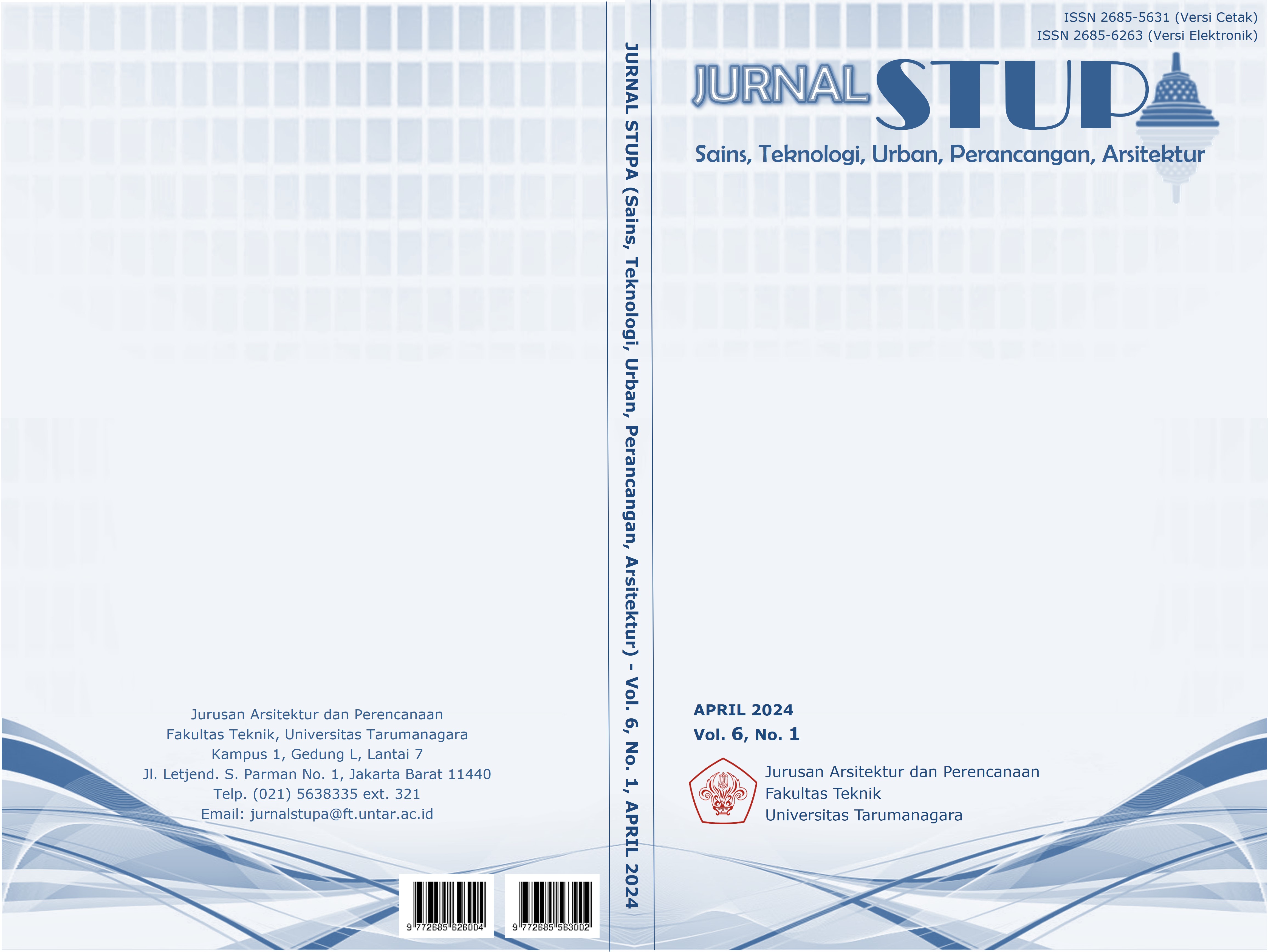PENDEKATAN ARSITEKTUR AUTISME DALAM PERANCANGAN MUSEUM EDUKASI
Main Article Content
Abstract
Autism has received global attention due to communication limitations, social interaction difficulties, and repetitive behavior. Comprehensive understanding reduces stigma and discrimination, allows people to be more empathetic and provide better support. Knowledge about autism also supports early help and community understanding through architectural interventions. This research explores the factors of therapy methods, the importance of understanding autism through architecture, and the integration of autism architecture in educational design. Understanding autism strengthens community support, improves resources and services, encourages better education and treatment programs, and promotes inclusivity and welcoming communities. Therefore, understanding autism is not only the task of health professionals or educators, but also the responsibility of the general public. An educational museum was created to depict the characteristics of autism through supporting installations, providing in-depth insight into the experiences of children with autism.
Keywords: Describe; Disease; Stigmatism
Abstrak
Autisme mendapat perhatian global karena keterbatasan komunikasi, kesulitan interaksi sosial, dan perilaku repetitif. Pemahaman menyeluruh mengurangi stigma dan diskriminasi, memungkinkan masyarakat lebih empatik dan memberikan dukungan lebih baik. Pengetahuan tentang autisme juga mendukung bantuan dini dan pemahaman masyarakat melalui intervensi arsitektural. Penelitian ini mengeksplorasi faktor metode terapi, pentingnya pemahaman autisme melalui arsitektur, dan integrasi arsitektur autisme dalam desain edukasi. Pemahaman tentang autisme memperkuat dukungan masyarakat, meningkatkan sumber daya dan layanan, mendorong program pendidikan dan perawatan yang lebih baik, serta mempromosikan inklusivitas dan masyarakat yang ramah. Oleh karena itu, memahami autisme bukan hanya tugas profesional kesehatan atau pendidik, tetapi juga tanggung jawab masyarakat umum. Sebuah museum edukasi didirikan untuk menggambarkan karakteristik autisme melalui instalasi-instalasi pendukung, memberikan wawasan mendalam tentang pengalaman anak-anak dengan autisme.
Article Details

This work is licensed under a Creative Commons Attribution-NonCommercial-ShareAlike 4.0 International License.
This work is licensed under a Jurnal Sains, Teknologi, Urban, Perancangan, Arsitektur/ STUPA Creative Commons Attribution-NonCommercial-ShareAlike 4.0 International LicenseReferences
American Psychiatric Association. (2013). Diagnostic and statistical manual of mental disorders (5th ed.). Arlington, VA: American Psychiatric Publishing.
Hallmayer, J., Cleveland, S., Torres, A., Phillips, J., Cohen, B., Torigoe, T., & Risch, N. (2011). Genetic heritability and shared environmental factors among twin pairs with autism. Archives of general psychiatry, 68(11), 1095-1102.
Hidayat, F. & Yulia, A. (2021). Empathic Architecture and Its Effect on Mental Health of Building Occupants: A Literature Review. Journal of Architecture and Built Environment, 48(2), 135-145.
National Institute of Neurological Disorders and Stroke. (2022). Autism Spectrum DisorderFactSheet.
Sheth, M. & Vyas, D. (2019). Empathic Architecture: A Human Centered Approach. International Journal of Engineering and Advanced Technology, 8(5), 518-524.
World Health Organization. (2017). Autism Spectrum Disorders. Retrieved from https://www.who.int/newsroom/fact-sheets/detail/autism-spectrum-disorder
Zalewski, M. & Paszkowska, A. (2019). Empathic Architecture as a Contemporary Trend in Modern Building. MATEC Web of Conferences, 252, 06002.



